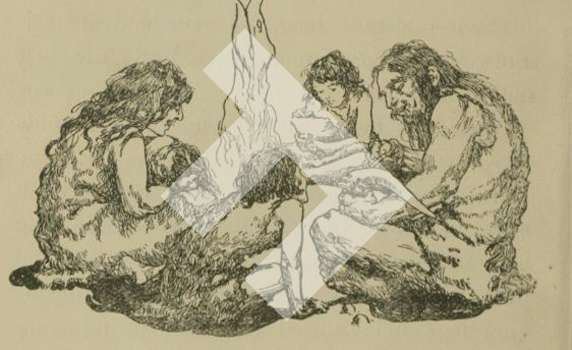If we turn back the hands of time on human nutrition our diets looked very different. Way before the prawn cocktail in a wineglass of the 90’s – we’re talking millenniums ago – our diets were balanced and healthy. They were varied and perfectly suited to the bodily systems of the average human being.
We’re still cavemen
When you think about it, this is no coincidence. Our anatomy and physiology has evolved over hundreds of thousands of years to suit the foods which were available in the wild. However, since the relatively recent advent of farming our diets have changed too fast for our bodies to keep up.
This has led to a new wave of people reverting back to the diet of our ancestors – essentially eating like cavemen. It’s known as the paleo diet and in a nutshell if you could hunt it, catch it or gather it from the wild, then you’re allowed to eat it.
But I don’t want to hunt…
So what does this mean in modern day terms? We’re not suggesting you strike out into the local park and start slaying pigeons with a catapult. Here are the main rules of the diet, to give you an idea of what’s on the menu and why.
No grains
Back in Flintstone times, grains weren’t on the menu. Grains are comprised largely of carbohydrates, which break down quickly into glucose (a kind of sugar). They also contain gluten and lectins, two big reasons that our bodies quite regularly object to them.
Vegetables galore
You can eat as many as you like, except potatoes. Veggies are packed full of nutrients, have very low carbohydrate content and contain far fewer calories in general. So chomp away!
Grass fed meat
Much of the meat on supermarket shelves is grain fed, which can cause the same problems as when we eat grain ourselves. Stick to grass fed meat if you can get your hands on some.
Fowl
Chicken, turkey, duck. They’re all on the menu. High in protein and available anywhere, these are great centrepieces to your meals that will leave you full up but not filled out.
Nuts
Remember that although rich in healthy nutrients, they’re also high in calories so if you’re looking to lose weight don’t go too nuts.
Volume
Some foods can really help bulk up your dinners without breaking the rules. Sweet potatoes, yams, lentils, pulses and beans are all fantastic fillers and will keep you fuller for longer.
Eggs
They’re rich in omega 3 and high in protein. A perfect meat substitute if you’re a vegetarian or fancy a change. Whip up an omelette, impress with a frittata or simply have a good old-fashioned boiled egg. Just remember, strictly no soldiers, unless they’re made of veg of course.
Fruit
This is your sweet treat on the paleo diet. Just remember not to overdo it as even natural sugar is still sugar. Berries are you best bet as they’re low in sugar and taste glorious.
Supplements
Most supplements aren’t necessary on a paleo diet, but there are a few which are considered beneficial. Vitamin D and fish oil supplements are both widely used, so might be worth considering. Unless all you eat is oily fish and you live in sun-drenched Australia, that is.
Trying the paleo diet might appear quite drastic to those of us who are used to filling up on bread, rice and pasta day after day. If it seems a bit extreme to cut all this out and replace with meat, veggies and pulses just remind yourself that actually, it’s exactly what your body is designed to do.
![]()
 Instagram
Instagram Pinterest
Pinterest Facebook
Facebook Twitter
Twitter YouTube
YouTube




 Paul
Paul 



